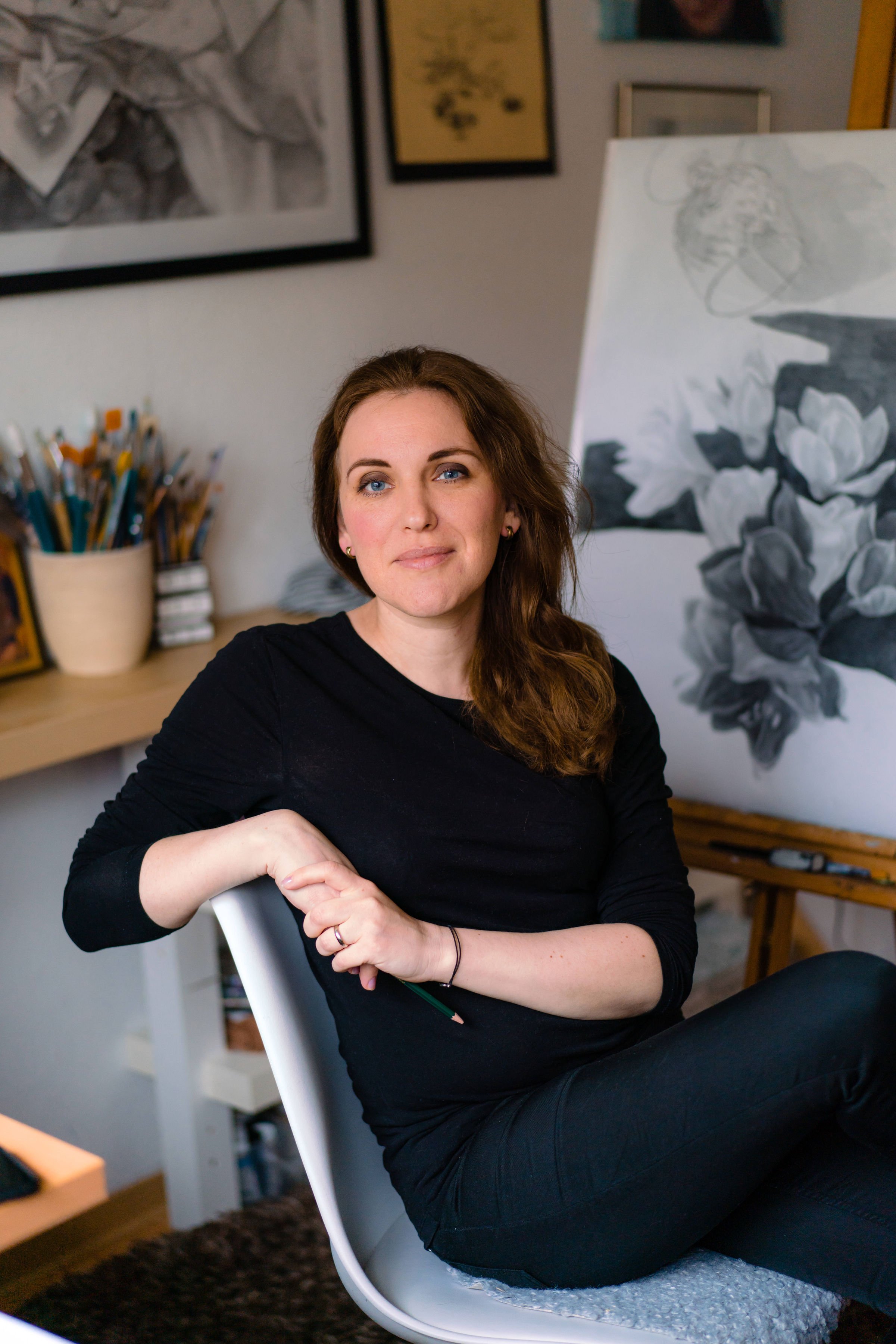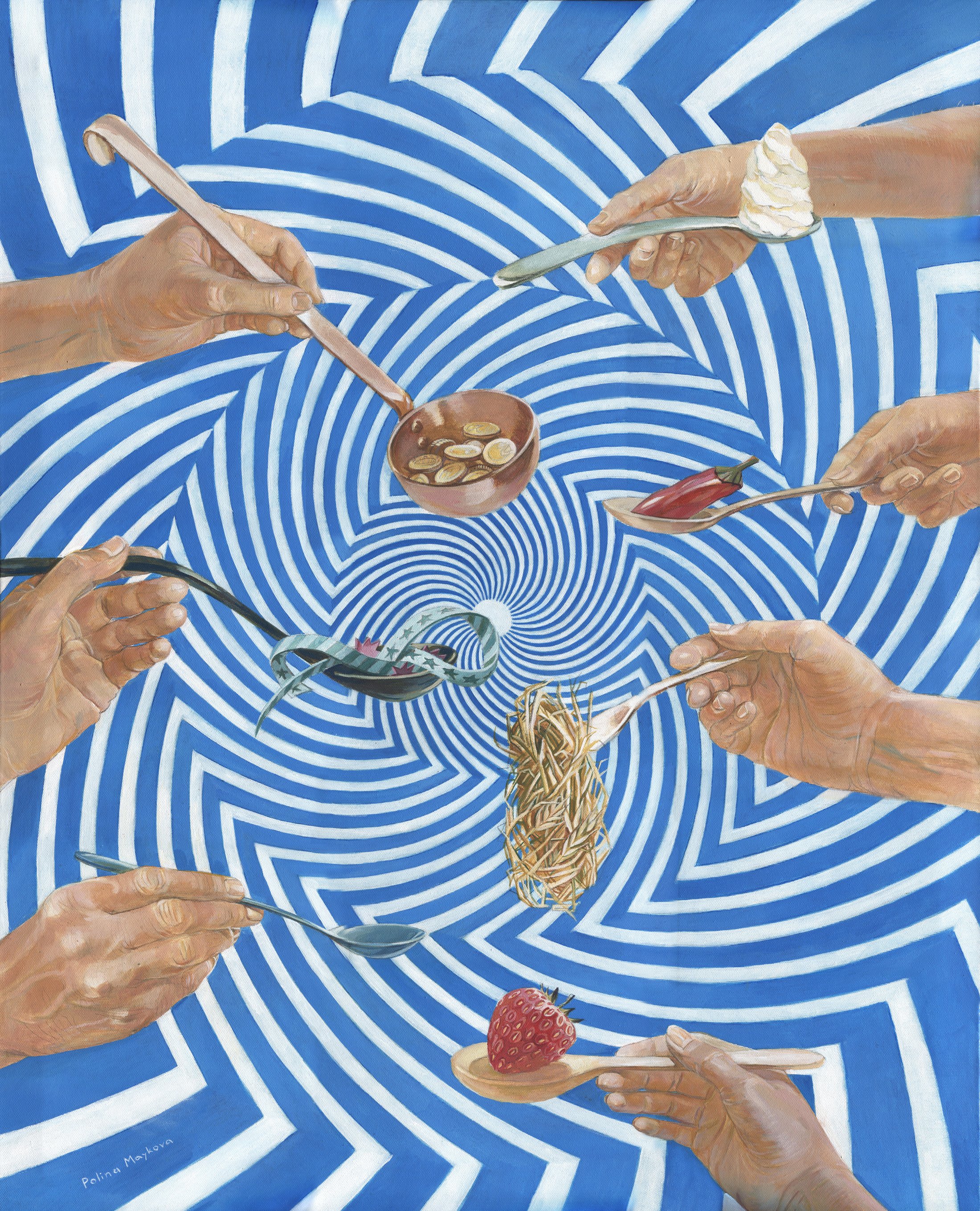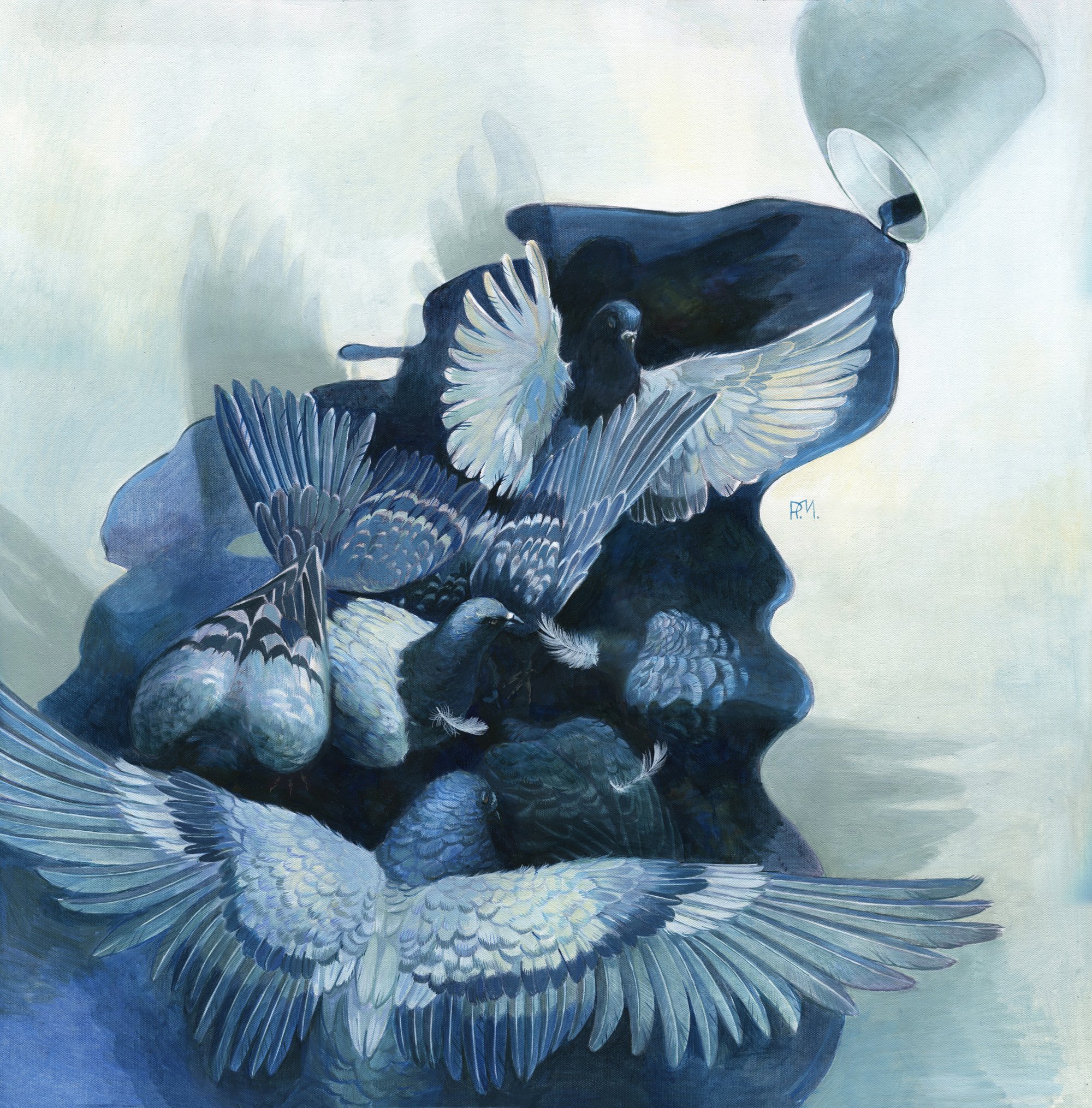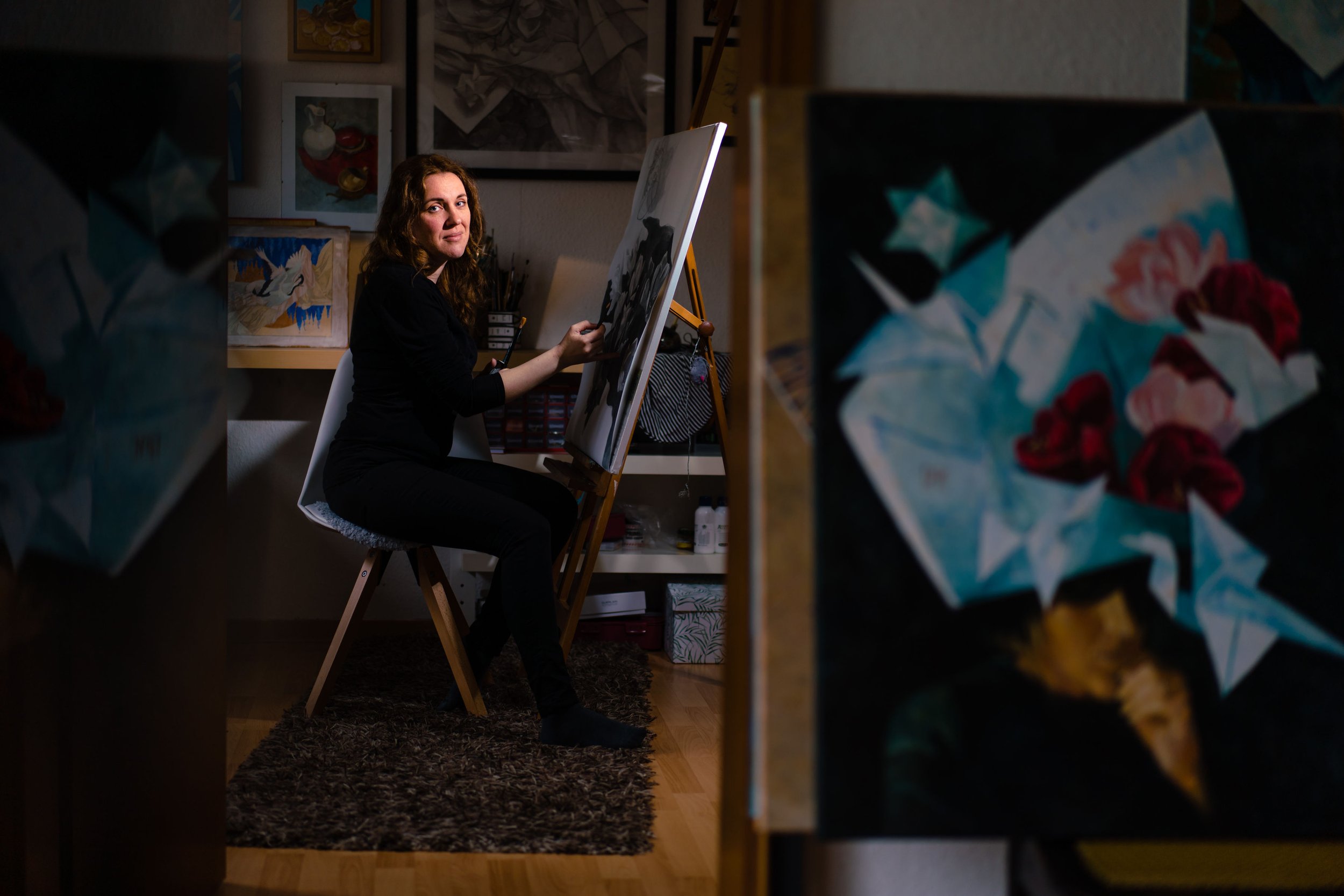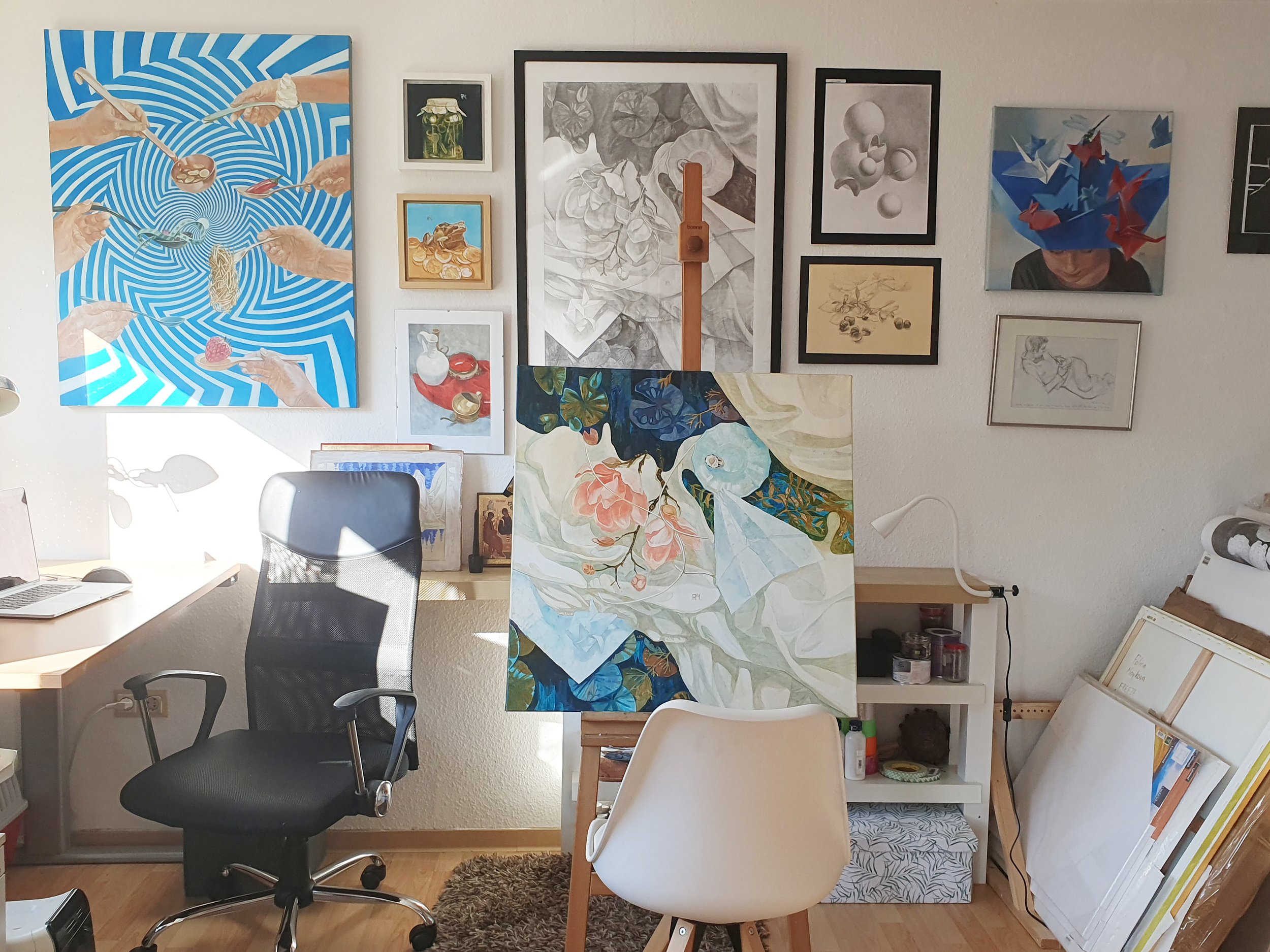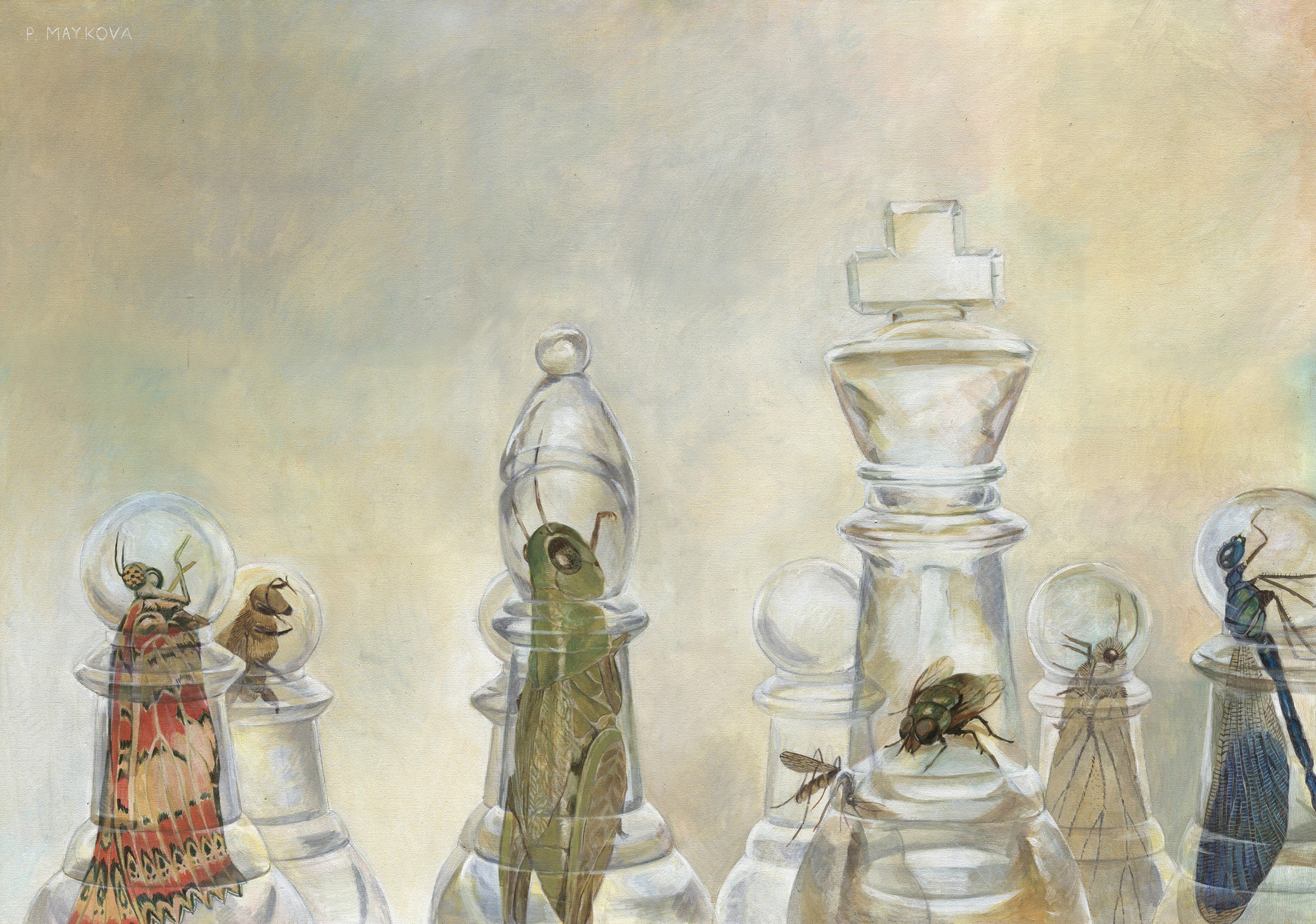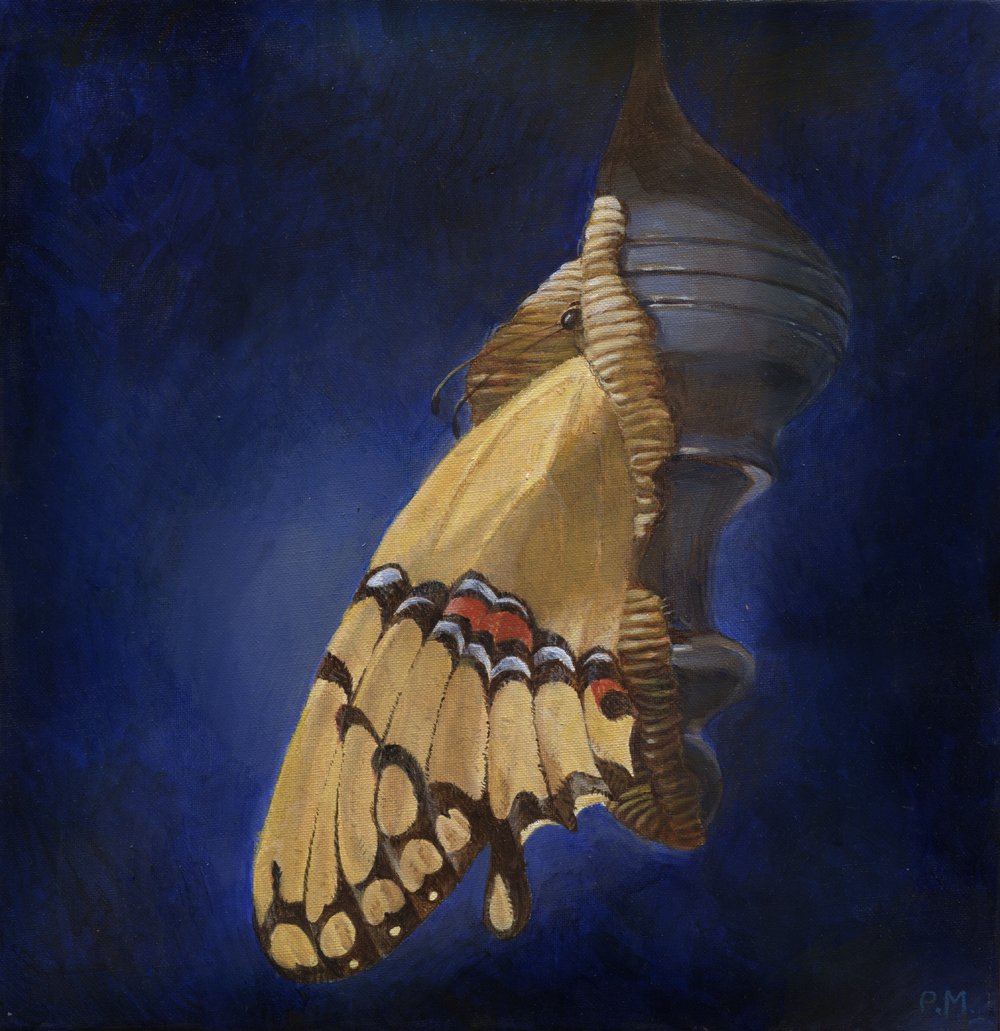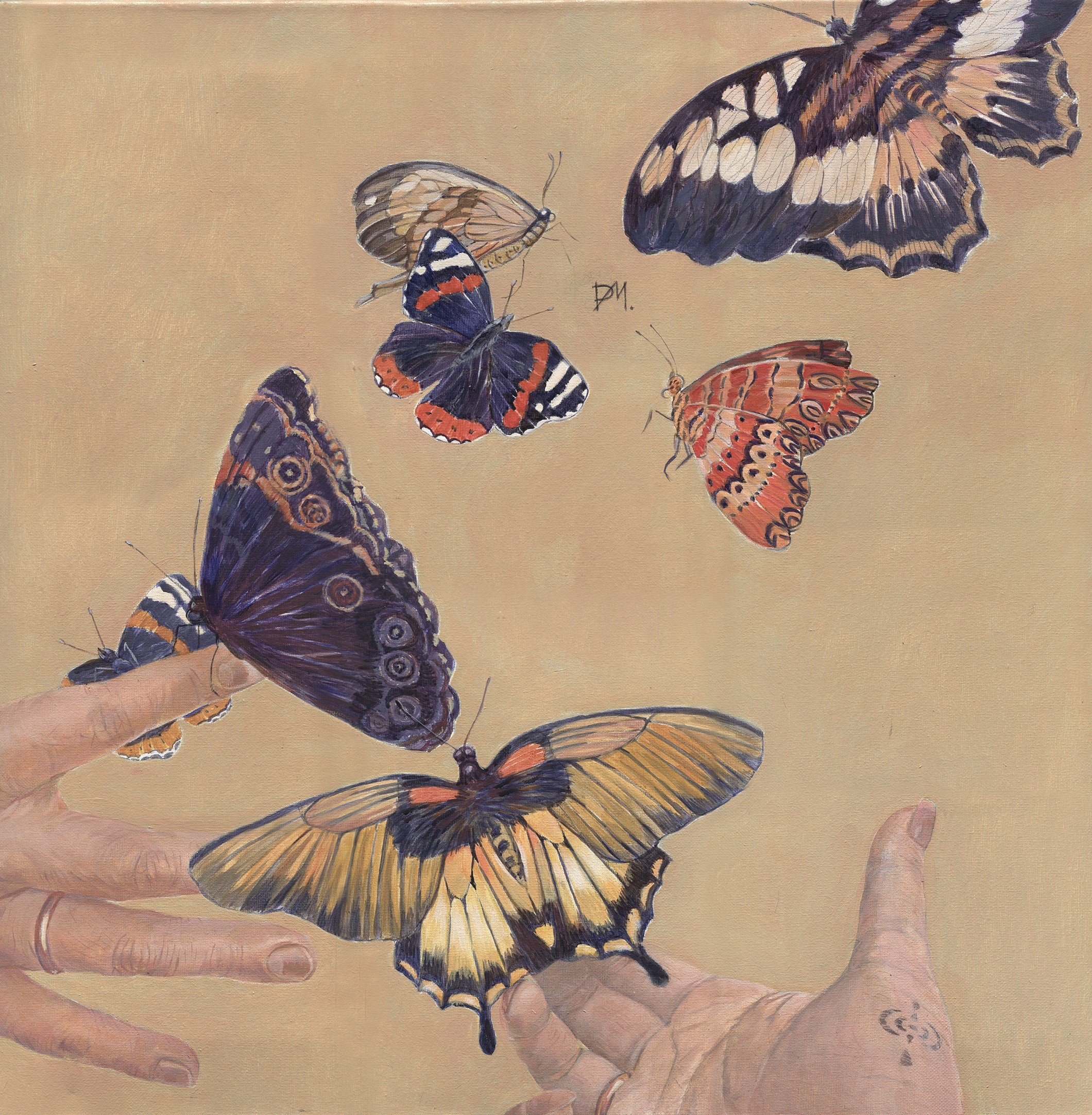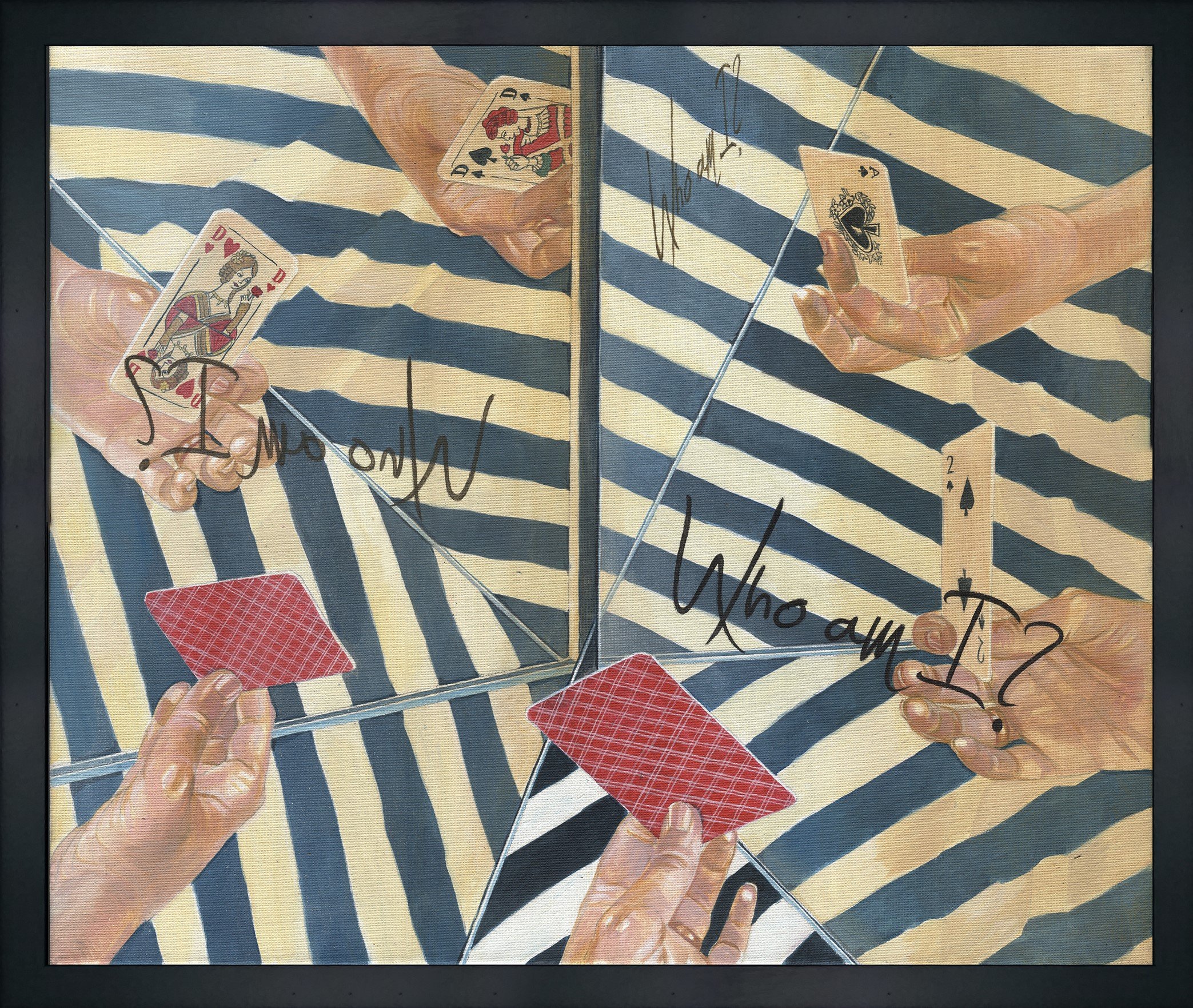Interview
Polina Maykova
Born in Moscow, 1982, Polina comes from a family of fine artists. She spent 6 years at the Moscow Academic-Artistic Lyceum of the Russian Academy of Arts, and studied art under the renowned artist, Olga Bor. In 1999, she moved to Germany with her family. Polina also has a BA in information design from Stuttgart Media University.
Polina’s special preference is artwork from the Middle Ages and the Renaissance era, even though she has developed her own unique style. Over time, another element in her work has become increasingly important: geometric structures contrasted with organic forms.
In her new works, Polina focuses on the human condition—the conditions, intentions and unsolvable contradictions in which we humans live and suffer. Her allegories, which draw on classical painting as well as contemporary figurative trends, show an undisguised yet loving view of our inner worlds.
What is your background and how did you start your journey in the art world?
“My mother accompanied me into the art world. She’s the very brilliant realist painter, Olga Bor. She taught at our home, and I grew up surrounded by art students, paint, and rolls of paper. I was present in every lesson. The students and studio were very special to me, and made me really want to be a part of this world when I grew up. When I was 5 years old, I painted for hours. My favorite format was very large—wallpaper length. I drew very detailed images of Pushkin Fairy Tales and Fantastic Stories on it.
Later, my mother took me to the Classical Art Academy. The 6 years of learning there overwhelmed me. It was the best time of my youth. I made a lot of friends in the art academy who became successful artists: Anastasia Kuznetsova-Ruf, Ivan Korshunov and Taisia Korotkova. We're still friends, and their art is a huge inspiration to me.
Moving to Germany with my family at the age of 18 turned my existence upside down. My outlook on life changed a lot. At the same time, I discovered design for myself. I was very into graphic design, communication design and illustration. But I always painted and never stopped, and my mother continued to teach me.
Perhaps due to this diversion of my interests towards design, I never saw myself as an independent artist for a long time, though I couldn’t live without a brush and pencil in my hand. It was only after I became a mother myself that I reconsidered my mental block and finally went public with my artistic work at the age of 35. My husband has been a great support to me.”
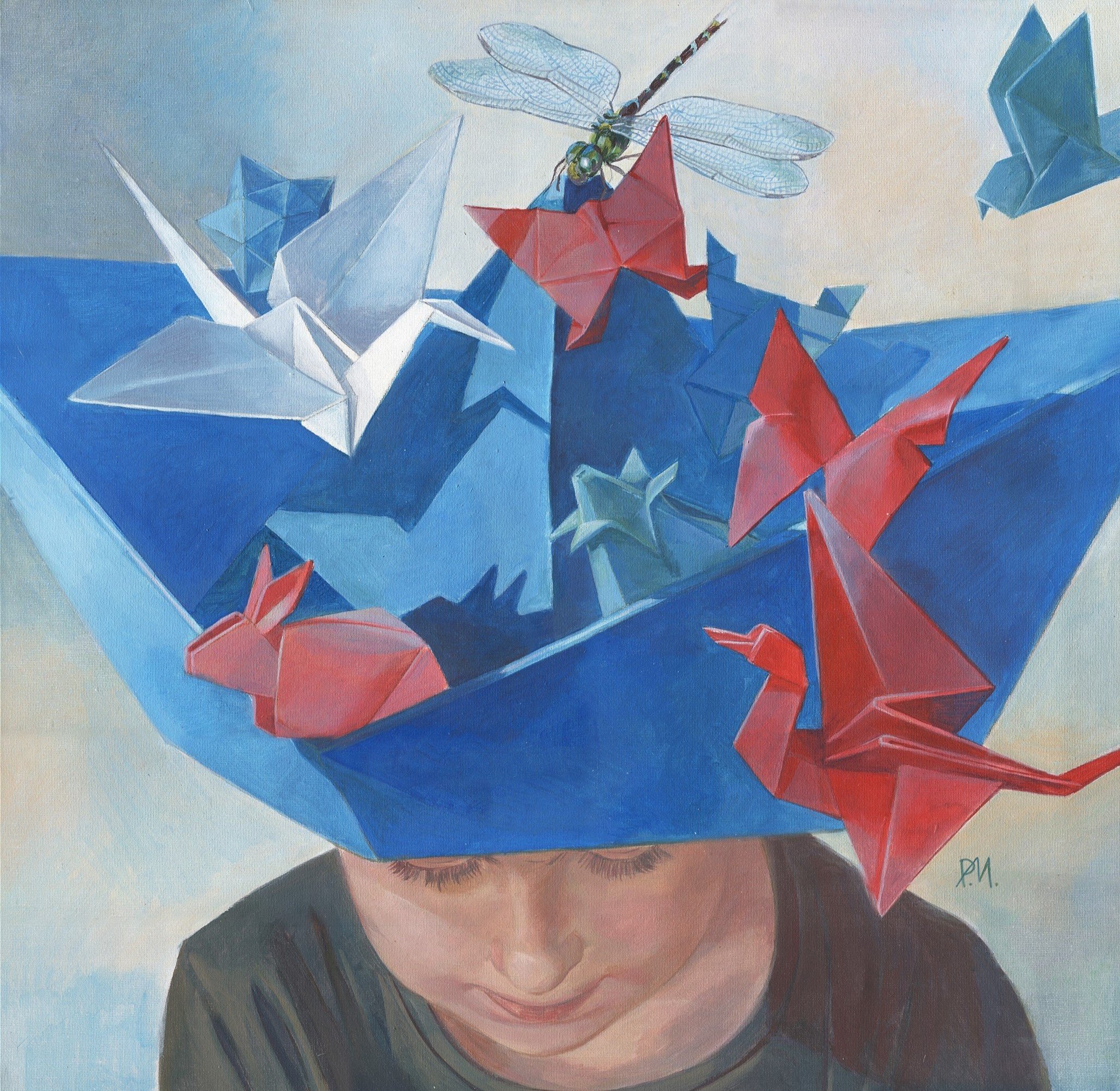

What inspires you?
“Life and my family and friends inspire me the most. Some spontaneous moments or situations have led to thoughts which have then resulted in an art piece. I’m also inspired by art of all kinds— especially classical antiquity. Medieval Renaissance masters inspire me with their technique, taste, and attentive eye. Modern artists, designers and architects are also a source of inspiration with their imagination and overwhelming creativity.”
“My son loved popping soap bubbles when he was quite young. One time, he asked why the bubbles burst on their own. After explaining to the best of my ability, my son interpreted my words in a completely different way. This made me realize that everyone strives for knowledge, and tries to understand the old views, beliefs and explanations in their own way. They build something new from their own ideas or theories. And that science is actually transient. This is how the painting ‘Lust for knowledge’ was created.”
“The painting ‘Dream’ was inspired by folded bed sheets. They simply fascinated me and I stared dreamily at the crease for so long. When I woke up from my dream, I found this thought in my head again.
The idea about merging reality and dreams through the viewer; this invisible border between reality and dream. The idea isn't new, but I really wanted to draw it my way.”
What themes do you pursue? Is there an underlying message in your work?
“In my life, I often had to find my way around my own thoughts and feelings, which is why my work is mainly about the interpretation of inner life. It's about the thought patterns, clichés and limits of perception that happen in one's own head. The world in your head is so closely connected to our life crises. I'm not a writer. I'm a painter. I pack my ideas and revelations into the paintings, and stuff it with symbolism.
I think inner ‘self-digging’ is the topic that defines the modern world. My favorite author, Noah Harrari explained it well in his book ‘21 Lessons for the 21st Century’. My wish is that my works appeal not only to the aesthetic viewer, but also inspire philosophizing and reflection. I am convinced that if everyone understands their inner self more, the other problems can also be dealt with more easily.”

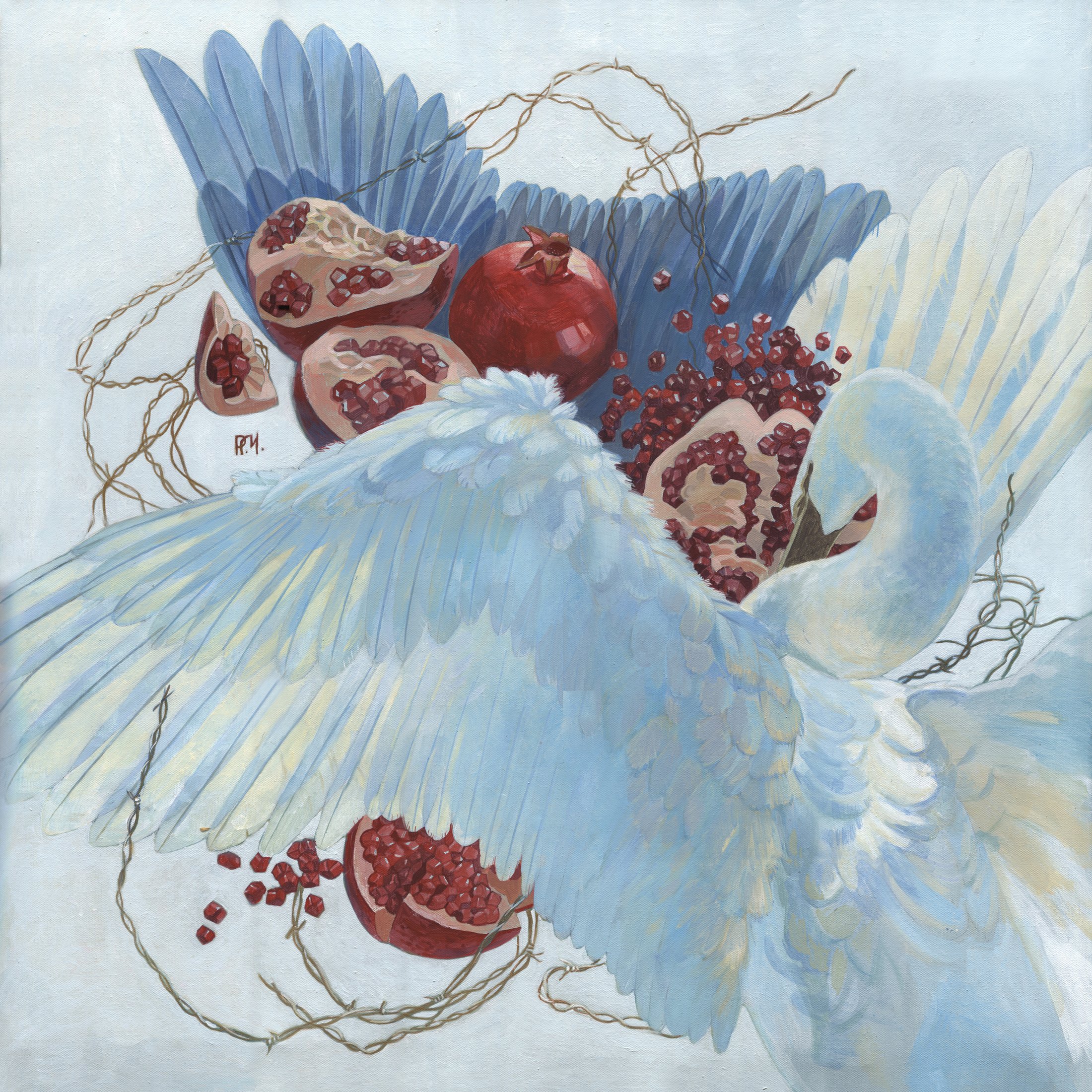
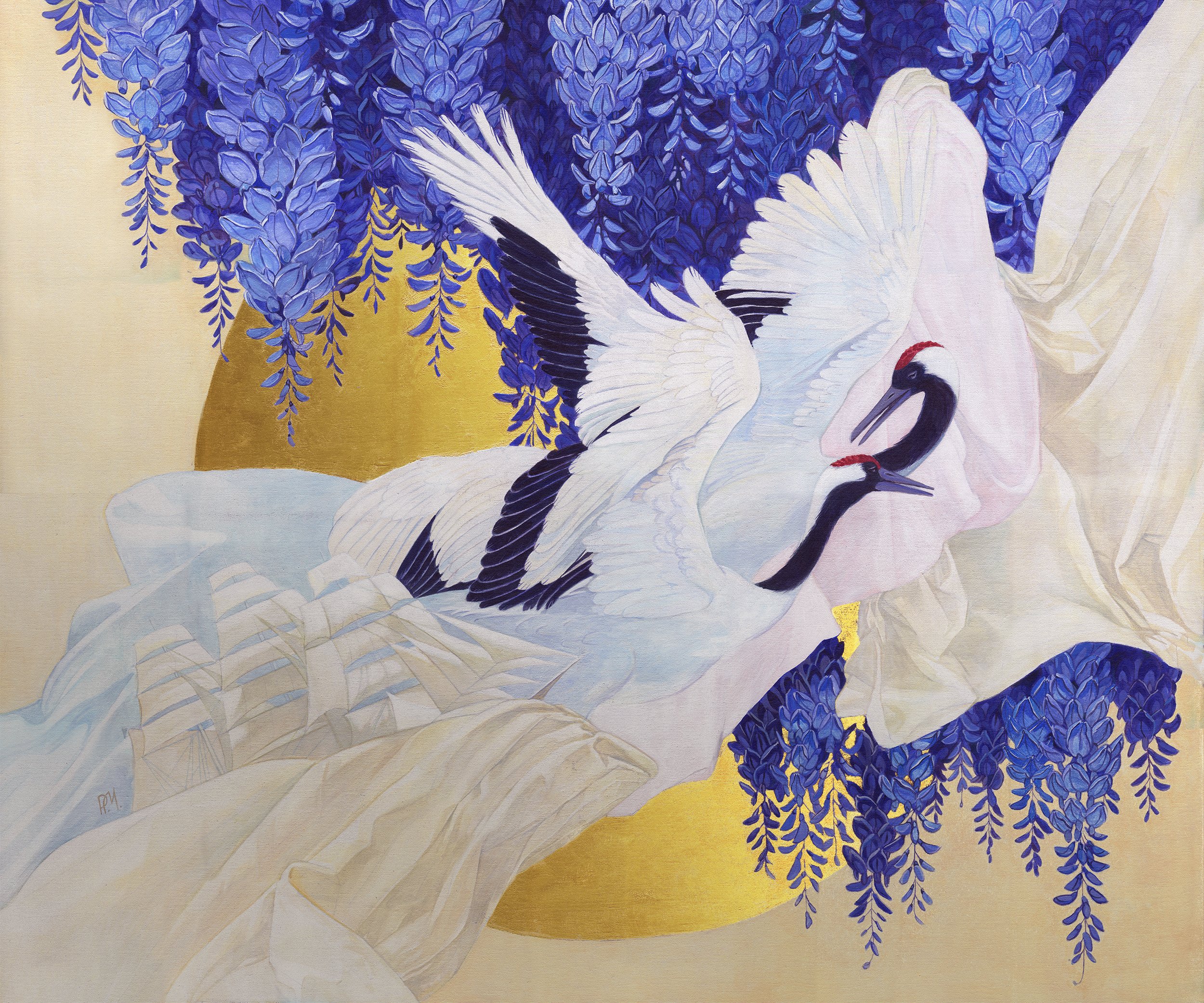
How would you describe your work?
“I paint simple still life, with a touch of romantic surrealism. I put in symbols that are common and widespread in modern European society. I try to reach the viewer first through the optical harmony, and hope that the gaze lingers longer on the picture and thus comes to the interpretations and to a further level of viewing.
For example, take the painting ‘Eventuality’—a spilled cup, a cause of a whirl of doves. There are doves under the dark liquid, and doves over the dark liquid. Strong dynamics in a quiet square. The idea is that an unintentional action could greatly shape the future, like a drop that generates the wave. Or a careless little thing could cause big trouble in its environment.”
Which artists influence you most?
“I'm influenced by very different artists. Perhaps one can say that there is a parallel between my art and the still life of 17th century Dutch paintings. On the other hand, in one place or another in my works, you can see the influence of impressionism and surrealism.
I'm also very influenced by many individual artists, although my work is very different from theirs. My favorites at the moment are Andrew Wyeth, Johan Barrios, Andrey Remnev and Sebastian Schrader.”
“In the past we humans learned to control the world outside us, but we had very little control over the world inside… When mosquitoes buzzed around our ears and disturbed our sleep, we knew how to kill them, but when a thought buzzed around in our heads and kept us up at night, most of us didn't know how to get rid of it.”
Noah Harrari, 21 Lessons for the 21st Century, p 27
What is your creative process like?
“When I have an idea, I have to implement it visually. I often go the classic route. I draw many sketches on the computer, and then by hand, then lastly with acrylic paints. I only keep the sketches where I see the most successful solution, and I discard the rest. I usually first make the painting as a drawing in order to work through the details. Then at some point, it matures in my head. Then an indescribable energy often comes over me; a force that leads me to the finished work. At that moment, I dive into a creative tunnel and wake up when everything is ready.
Finally, I scan my work and write a line of text about it. A lot of people ask me why I write a text. All I can say is, why not? It might be interesting to read someone else's interpretation after you have your own.”
What is an artist’s role in society and how do you see that evolving?
“Artists are very emotionally sensitive, and they may be a kind of ‘sensor’ for society. Artists transmit and articulate the moods and thoughts that are present in society, or perhaps just emerging.
Art is a powerful thinking tool. It shapes humanity by making you more sensitive and attentive to each other and to the environment.”
Have you had any noteworthy exhibitions you'd like to share?
“ArtCompass, from the publisher Himmelblau, is an encyclopedia of contemporary artists that will be published in May 2022. It’s a printed compendium of selected living artists from the genres of painting, graphics, digital art, sculpture and photography. My profile is featured there. I won the inclusion in this lexicon through the Palm ArtAward 2021 competition, and I’m very proud of it.
Other exhibitions and awards are listed below.
Exhibitions:
2022 - The ARTBOX PROJECT World 2, Urbanside Gallery Switzerland - Zug, Switzerland.
2021 - Stuttgart. Maritim - Stuttgart, Germany.
- Aequilibrium. Arte Borgo Gallery - Rome, Italy.
- Artists Association exhibition. Maritim - Stuttgart, Germany.
- Swiss Art Expo Participation in the art project. Zürich Bahnhofshalle, Switzerland.
- Online Exhibition. Novumbasel / Online - Basel, Switzerland.
- Gallery Il Collezionista - Rome, Italy.
2020 - Thought Patterns. Piano Room - Stuttgart, Germany.
- Perspective. Ackermanns - Stuttgart, Germany.
- POP-UP Art Fair / BLEICHENKONTOR, Galleria Passage - Hamburg, Germany.
- The ARTBOX PROJECT Zurich during the SWISSARTEXPO / Zürich Bahnhofshalle - Switzerland.
- Wait a moment! Stuttgarter Künstlerbund - Stuttgart, Germany.
- Juried theme exhibition 2020 Hocus-pocus/Culture at the Kelterberg - Vaihingen, Germany.
- ARTE SONO, interdisciplinary trade fair for the arts and fine arts. SI Center - Stuttgart, Germany.
2019 - Rainbow of the art. Ludwigsburg Castle - Lüdwigsburg, Germany.
- Rainbow of art. Villa Eugenia - Heuchingen, Germany.
Awards2021 - Palm Art Award- Certificate of Excellence- Leipzig, Germany.
- Painting of the Year 2021 - Nominated- Raamsdonksveer, The Netherlands.
- Michelangelo International Prize- Winner- Rome, Italy.
2020 - Palm Art Award - 2nd Chance Prize - Germany.
Press Coverage:
2022 - Salvatore Russo- ART International CONTEMPORARY Magazine Issue 1.
- Salvatore Russo and Francesco Saverio Russo, Italy – 4th International Leonardo da Vinci Prize.
- Oxana Ditte- Interview with Polina Maykova. symbolism in the works of art.
You can watch this here.
2021 - Novum Basel- Interview with Polina Maykova.
- Museo Venanzo Crocetti Romaaequilibrium, international art exhibition catalogue.
- Salvatore Russo and Francesco Saverio Russo, Italia- Michelangelo International Prize Book.
- Salvatore Russo and Francesco Saverio Russo, Italy – ART International Contemporary Magazine January/February, Rome.”

